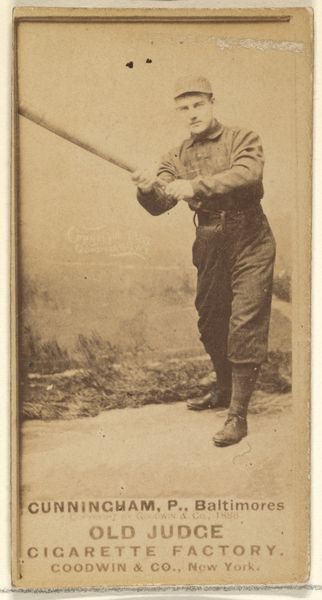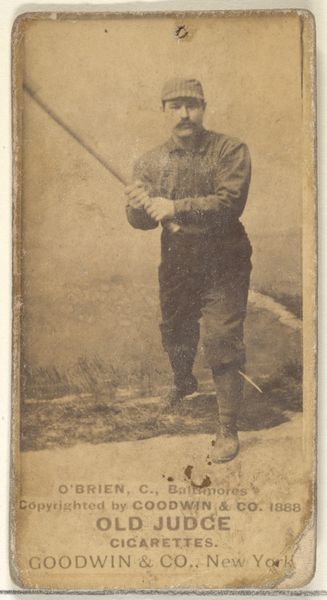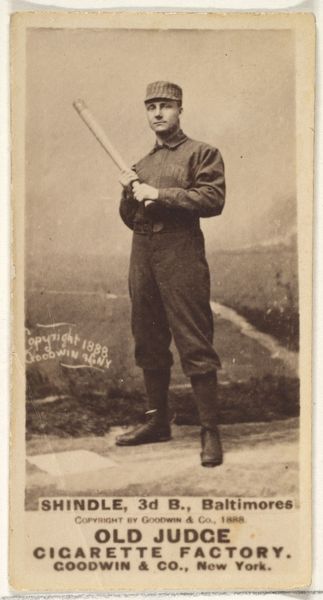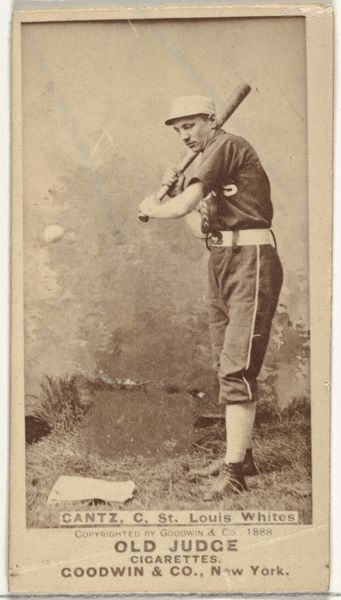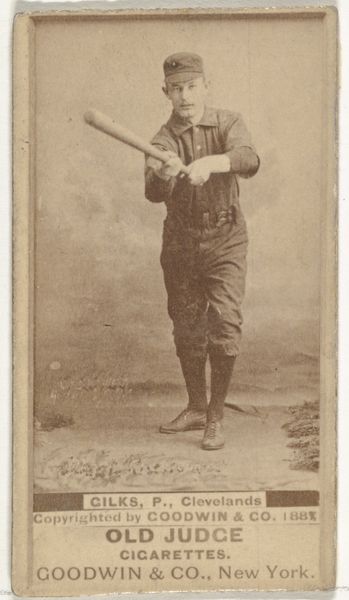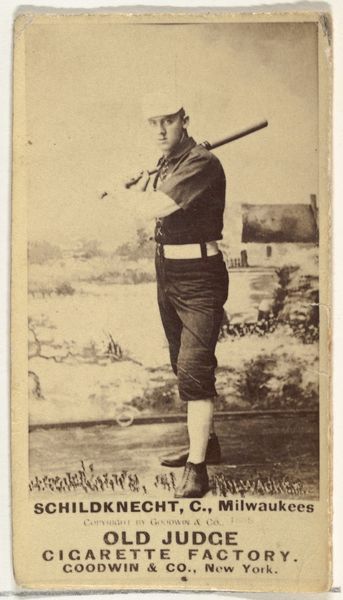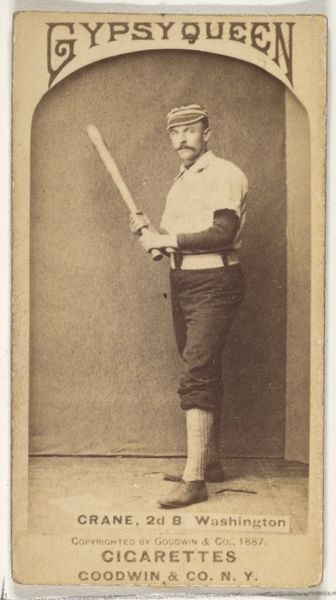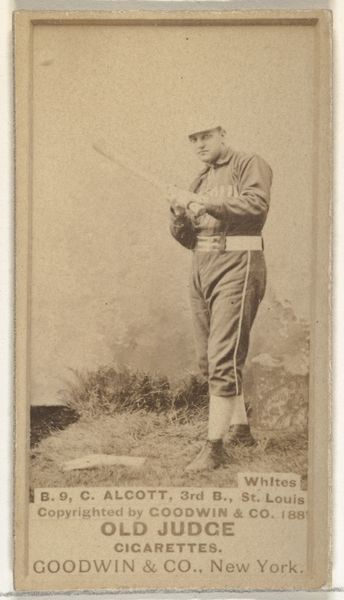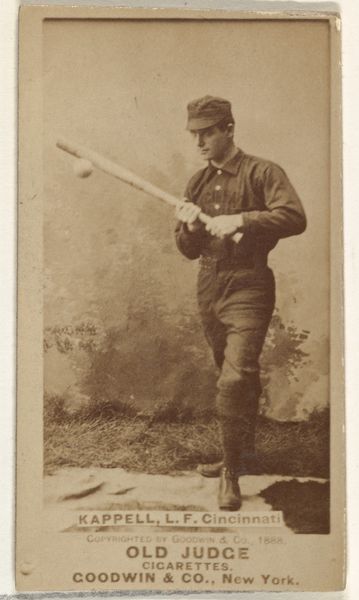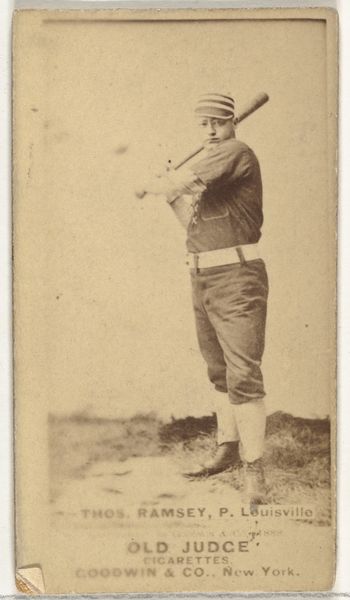
Sproat, Pitcher, St. Louis Whites, from the Old Judge series (N172) for Old Judge Cigarettes 1887 - 1889
0:00
0:00
Dimensions: sheet: 2 11/16 x 1 3/8 in. (6.9 x 3.5 cm)
Copyright: Public Domain
Curator: Here we have an albumen print dating from between 1887 and 1890, produced by Goodwin & Company as part of the Old Judge Cigarettes series. It features pitcher Ed Sproat of the St. Louis Whites. Editor: It's remarkable how the sepia tones give it an antiquated feel, and the composition is intriguing; it’s as though Sproat is caught between action and contemplation. Curator: These cards were inserted into cigarette packs, which makes the relationship between leisure, commerce, and popular culture quite explicit. The distribution mechanism alone offers a powerful commentary on late 19th-century America. Editor: Exactly. And look closely at the textures – the grainy background contrasting with Sproat’s smoothly rendered uniform. It screams materiality. The cigarette manufacturers appropriating images of athletes points directly to a capitalist engine needing fuel, churning out commodities for mass consumption. Curator: Absolutely. This speaks to the commercialization of sports and the use of celebrity endorsements. Think about the working-class consumer of these cigarettes; owning an image of Ed Sproat, they gain a perceived connection to a local hero, a St. Louis icon. Editor: Not only that, it elevates the labor of these athletes and commodifies their image as collectible ephemera, reinforcing their place in a growing leisure market. Consider the resources funneled into cigarette production against the limited access for sporting opportunities. Curator: That interplay is fascinating! And also to consider, what sort of aesthetic conventions were in place when making a picture of a baseball player. The somewhat blurry landscape versus the clear baseball uniform on the body of Ed Sproat, for instance. Editor: Seeing how this small card, mass-produced for profit, captured and commodified the athletic physique opens a dialogue about consumption and production, of tobacco and athletic hero worship. The means by which these photos came into existence, circulated, and now archived offers an insight into art production itself. Curator: Indeed. It really pushes us to rethink traditional boundaries between fine art, sports ephemera, and social history. It has transformed my understanding, thank you. Editor: A very insightful object and a great conversation, broadening perspectives on materials and socio-economic status, and art.
Comments
No comments
Be the first to comment and join the conversation on the ultimate creative platform.
